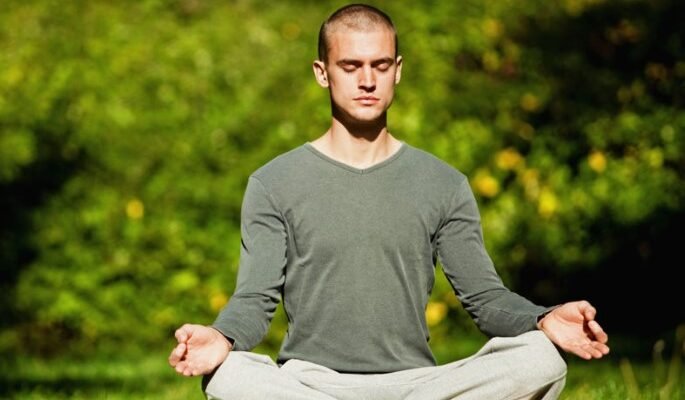
Ramadan is a sacred month observed by millions of Muslims worldwide. It’s a time of spiritual reflection, self-discipline, and heightened devotion. Alongside fasting from dawn until sunset, Ramadan offers an opportunity for individuals to focus on self-improvement, inner peace, and connection with the divine. In recent years, there has been a growing recognition of the benefits of integrating yoga and meditation practices into Ramadan routines. These ancient disciplines can complement the spiritual objectives of Ramadan, offering practitioners a holistic approach to rejuvenating their mind, body, and soul. In this article, we delve into the ways yoga and meditation can revitalize your Ramadan experience.
Understanding Yoga and Meditation:
Yoga is an ancient practice that originated in India, focusing on physical postures (asanas), breathing techniques (pranayama), and meditation to achieve holistic well-being. Meditation, on the other hand, is a practice of mindfulness and concentration, aiming to quiet the mind, cultivate inner peace, and deepen self-awareness. Both yoga and meditation offer numerous health benefits, including stress reduction, improved flexibility, enhanced focus, and emotional balance.
Benefits of Yoga and Meditation during Ramadan:
Stress Relief:
The fasting period during Ramadan can sometimes induce stress due to changes in eating habits and daily routines. Yoga and meditation provide effective tools for managing stress by promoting relaxation, releasing tension from the body, and calming the mind.
Increased Energy Levels:
Despite abstaining from food and water during daylight hours, practicing yoga and meditation can boost energy levels by improving circulation, stimulating the nervous system, and enhancing vitality. Gentle yoga poses and breathing exercises can invigorate the body without overexertion.
Spiritual Connection:
Ramadan is a time of heightened spirituality, and yoga and meditation offer pathways to deepen one’s connection with the divine. Through focused intention, prayerful meditation, and contemplative practices, individuals can experience a deeper sense of presence and connection to the spiritual essence of Ramadan.
Mental Clarity:
Fasting can sometimes lead to mental fogginess or difficulty concentrating. Engaging in mindfulness meditation and yoga can sharpen mental clarity, improve cognitive function, and enhance overall mental acuity, allowing individuals to fully engage in spiritual practices and daily activities.
Yoga Practices for Ramadan:
Gentle Asanas:
During Ramadan, it’s essential to practice yoga mindfully and with moderation, especially during fasting hours. Gentle asanas, such as seated twists, forward bends, and restorative poses, can help maintain flexibility, alleviate stiffness, and promote relaxation without overexerting the body.
Breathing Techniques:
Pranayama, or yogic breathing exercises, can be particularly beneficial during Ramadan. Deep breathing techniques, such as diaphragmatic breathing (also known as belly breathing) and alternate nostril breathing, can calm the nervous system, reduce stress, and enhance oxygenation of the body.
Sun Salutations (Surya Namaskar):
While rigorous physical activity is generally not recommended during fasting hours, a modified version of Sun Salutations can be practiced mindfully to awaken the body, stretch the muscles, and increase circulation. Slow, mindful movements accompanied by conscious breathing can make this practice suitable for Ramadan.
Meditation Practices for Ramadan:
Mindfulness Meditation:
Mindfulness meditation involves focusing on the present moment without judgment, allowing thoughts and sensations to arise and pass without attachment. During Ramadan, mindfulness meditation can be practiced before or after breaking the fast, fostering a sense of inner peace, gratitude, and awareness of divine presence.
Dhikr Meditation:
Dhikr, or the remembrance of God, is a central practice in Islam. Dhikr meditation involves repeating sacred phrases or names of Allah silently or aloud, such as “SubhanAllah” (Glory be to God), “Alhamdulillah” (Praise be to God), and “Allahu Akbar” (God is the Greatest). This meditative practice can deepen spiritual connection and cultivate a heart-centered awareness of divine presence throughout Ramadan.
Guided Visualization:
Guided visualization meditation involves mentally imagining peaceful scenes, sacred symbols, or spiritual journeys. During Ramadan, guided visualization can be tailored to reflect themes of purification, forgiveness, and divine mercy, helping individuals align their intentions with the spiritual objectives of the holy month.
Conclusion:
Incorporating yoga and meditation practices into Ramadan routines can offer profound benefits for individuals seeking to revitalize their mind, body, and soul during this sacred month. By integrating gentle yoga asanas, breathing techniques, and mindfulness meditation into daily rituals, practitioners can enhance their physical well-being, reduce stress, deepen spiritual connection, and cultivate inner peace. Whether practiced individually or in community settings, yoga and meditation provide powerful tools for embracing the spiritual essence of Ramadan and nurturing holistic well-being. As we embark on this transformative journey, may we find solace, strength, and renewal in the union of body, mind, and spirit, illuminating our path towards greater self-awareness and divine presence. Ramadan Mubarak!



